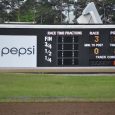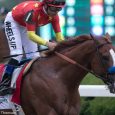What do the Holy Grail and an all-encompassing, profitable handicapping number for every type of race have in common? People have searched for both of them forever and no one has found either one yet!
As handicappers we all fall into this trap. We are always looking to find a single figure that incorporates the many areas we analyze through the course of our daily handicapping. We want a figure that rates horses against each other and accounts for speed, form, class, pace, jockey, trainer, owner, surface, medication and everything else. We want that figure to produce a high percentage of winners on every race. We want that figure to be profitable.
It doesn’t exist. Not in horse racing. Not in other sports.
In baseball, the benchmark of a player’s worth used to be based on statistics. Batting average, home runs, wins and earned run average were routinely used to assess a player’s abilities. Then the emphasis moved to on-base percentage, slugging percentage, and WHIP (walks and hits per inning pitched). No one figure proved to be the most powerful indicator of future performance.
Along came Bill James and Sabermetrics. New figures such as WAR, or wins above replacement, were developed, designed to quantify the level of contribution to a team’s success an individual had. While not a perfect figure, it is a progression from simpler stats… but it still doesn’t tell the whole story. Some argue that there are weaknesses to the WAR figure. Some claim that no standard WAR exists; the impact of fielding is skewed; it doesn’t account for defensive shifts or designated hitters.
Jeff Sagarin posts his ratings for most major sports offering a value that reflects three score-based methods. His ratings are updated daily and posted both on his own site as well as the USA Today site. Having tracked a few of his major sports ratings (NFL, NBA and NHL), you may land on the best team, but you will lose money in the long run playing the money line or against the spread. There are just too many variables on a team comprised of individuals and varying styles to accurately apply ratings to them.
While Sagarin, James and other Sabermetricians have provided useful figures that can prove to be powerful in certain situations, their work isn’t perfect in every condition.

Andy Andres of Boston University at Google’s office in Massachusetts discussing Sabermetrics (photo via YouTube).
Before you cry heresy and try having me burned at the cross, consider the widely used horse racing figures that grace our past performances.
Brisnet provides a Prime Power figure that incorporates speed, class, pace, weight, form, distance and other factors. Brisnet claims that the top figure hits 31 percent of the time, but offers no return on investment (ROI) information. While I have not validated their percentages, I have no reason to disagree with them. Yet as a standalone figure, the Prime Power figure doesn’t appear to be profitable.
The Daily Racing Form provides the Beyer Speed Figure. The Beyer Speed Figure took absolute speed ratings based on finishing times a bit further by comparing them to the par or average value for that track and applying a variant depending on whether the track was faster or slower than average on the day the figure was earned. While Andy Beyer did use his own work to pen his classic book, My $50,000 Year at the Races, his figures have become widely used and have lost their edge at the betting windows.
Even I chased the notion that one could summarize every horse in any field with one figure. Mine was going to be called the “Performance Power Figure” and it was going to be different — it was going to be profitable!
After all, I had toiled with speed figures, pace-based speed figures, class ratings and other figures which assessed ability at various points within a race. All had shown some consistency, particularly amongst the top three in each category. I was going to incorporate my concept of quality starts into the analysis.
It seems only natural that some weighted combination of these figures and other factors such as jockey performance, trainer records, and pedigree would improve the accuracy of an automated rating, right?
Wrong.
No matter how I tried weighting the factors that should point to contenders, I couldn’t get it to work consistently across a wide sample of races. Even when I could weigh the factors to get a higher win percentage, the profitability wasn’t there.
Each type of race is different and requires a different approach. Pedigree plays a bigger part in the handicapping of maiden races or first-time turf starts, where you have no other real information to go on other than the trainer and jockey (and workouts, but that accuracy of that information is debatable). The same information isn’t as useful when analyzing a conditioned $5,000 claiming race where you are looking for a horse that has an advantage given the conditions.
I have long since given up on my futile quest for the “Holy Grail” of figures. While someone may one day create the perfect figure, I still prefer to analyze each race. In my opinion, you are still better off assessing factors like speed, pace, class, jockey and pedigree based on the conditions of the race.




